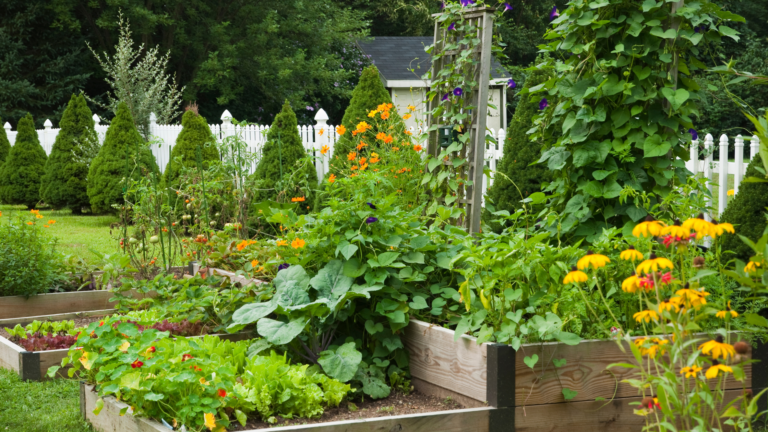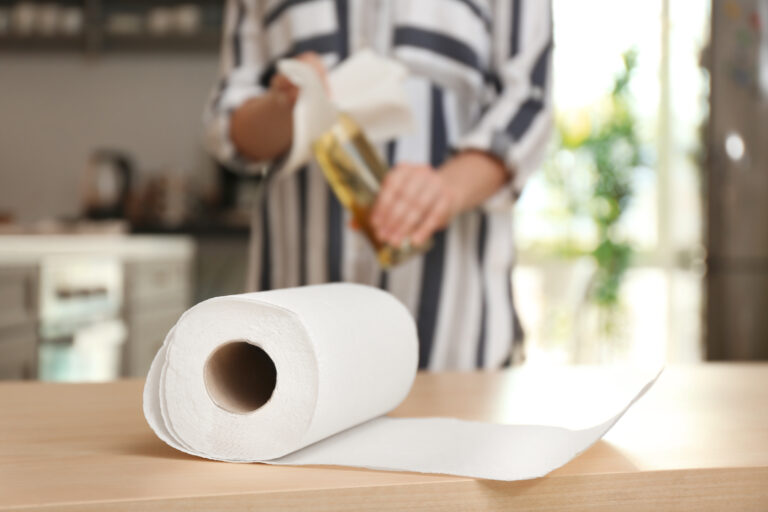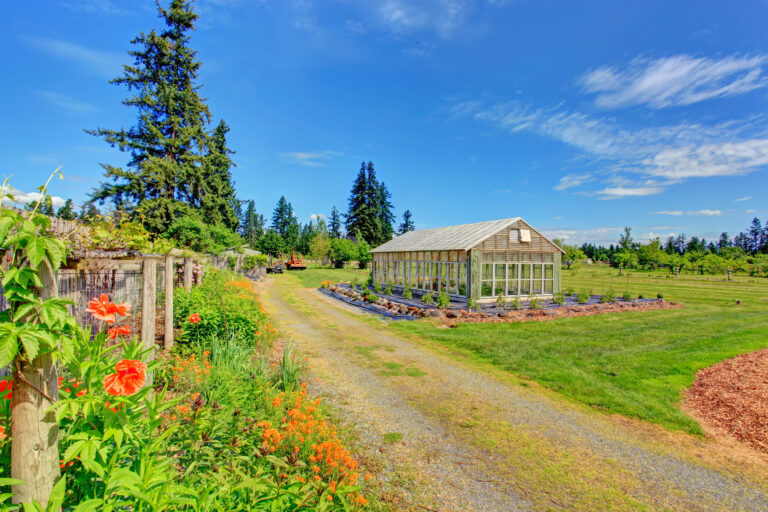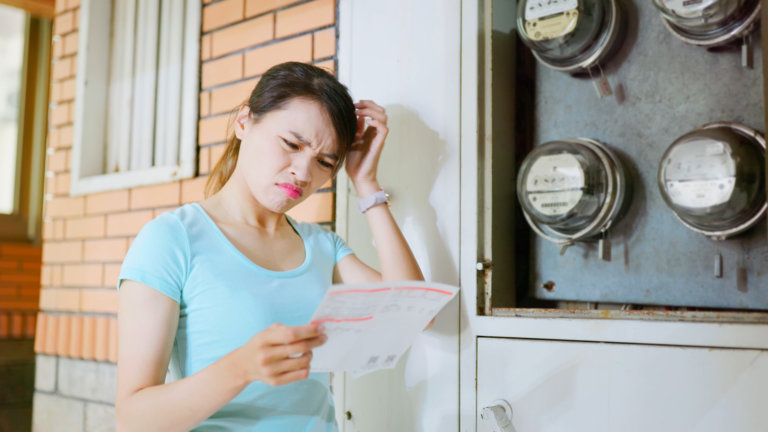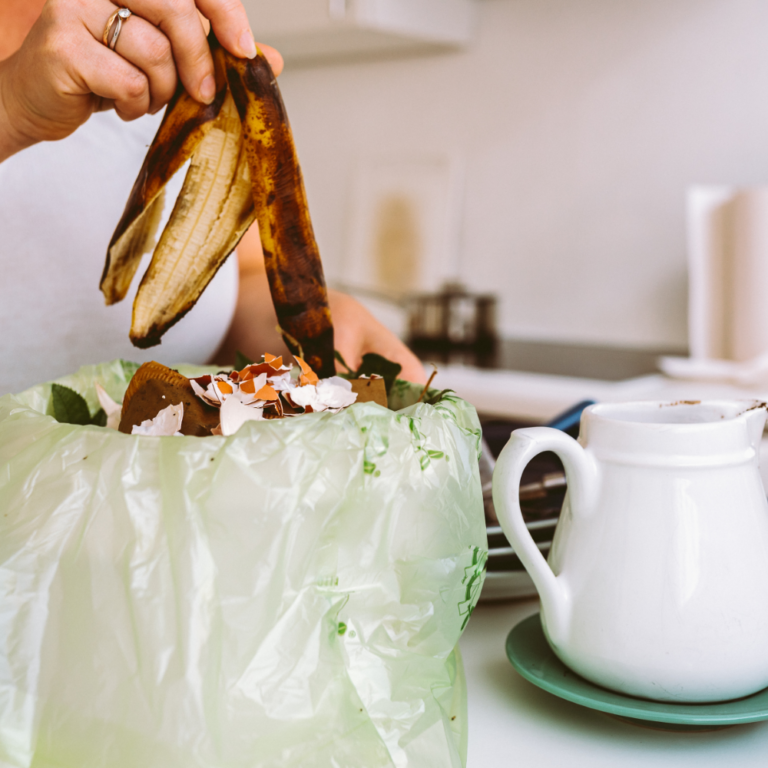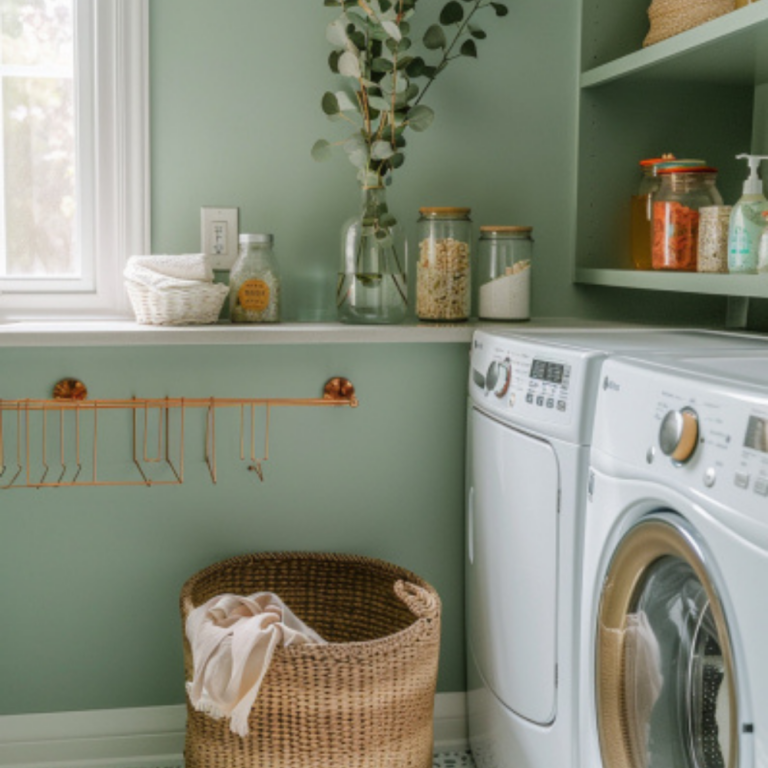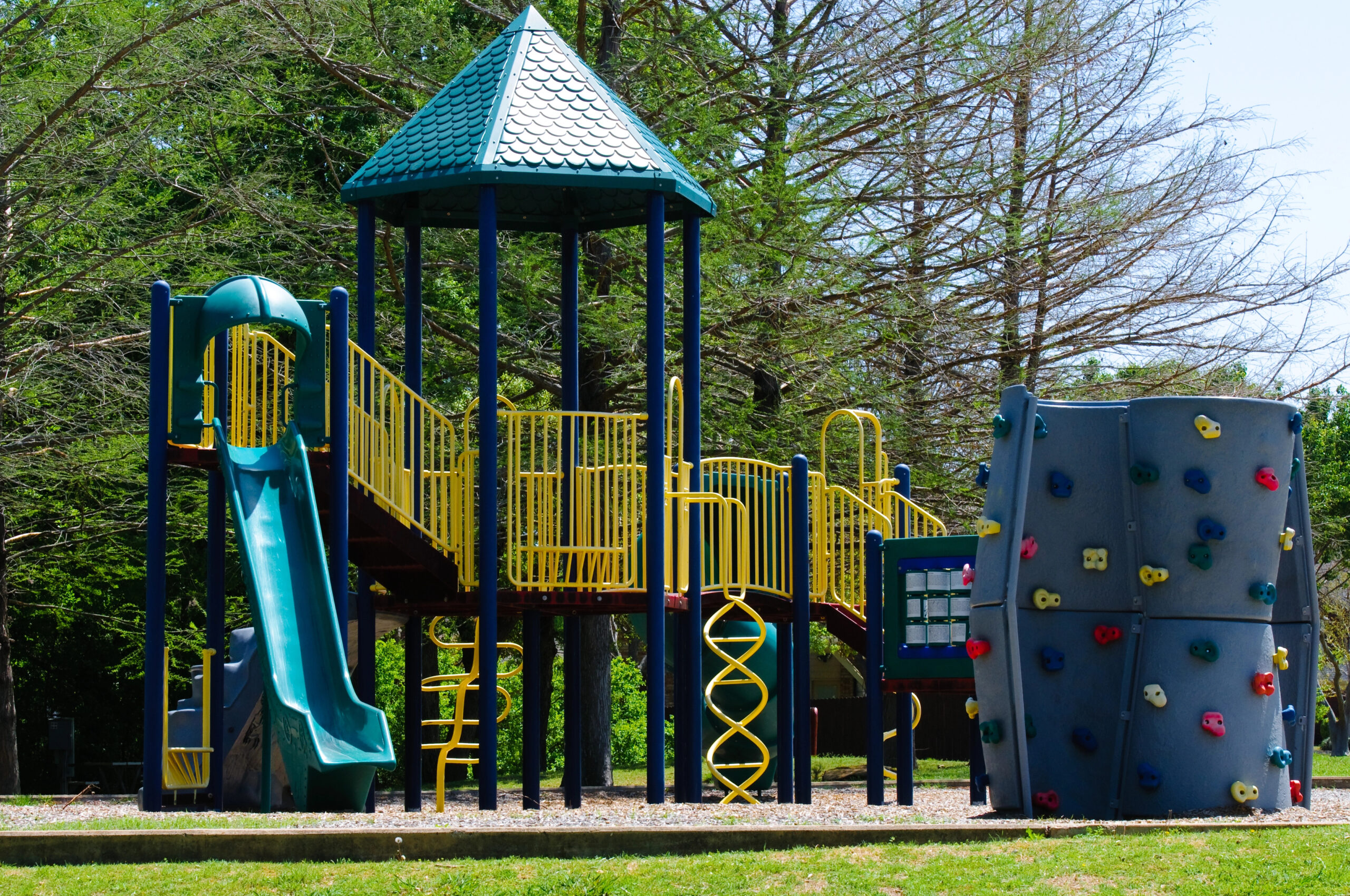
Disclosure: Some of the links in this post are affiliate links, meaning we may earn a small commission if you make a purchase through them.
This post is about non-toxic rubber mulch.
Did you know that mulch can actually catch fire on its own? It might sound surprising, but mulch is indeed flammable. According to the National Fire Protection Association (NFPA), over 14,000 fires per year are caused by spontaneous combustion. While not all of these are directly linked to mulch, it underscores the seriousness of the issue.
In the quest for sustainable, safe, and visually appealing landscaping materials, non-toxic rubber mulch has emerged as a leading choice. This innovative material is crafted from recycled rubber tires and offers numerous benefits beyond just its attractive appearance. Its transformation from tire rubber to a versatile mulch material showcases the strides made in modern recycling efforts and reflects consumer demand for eco-friendly products.
This guide explores the world of non-toxic rubber mulch, delving into its advantages, applications, and its crucial role in ensuring playground safety and advancing landscaping practices.
What Is Non-Toxic Rubber Mulch?
Non-toxic rubber mulch is a ground cover made from recycled tire rubber, transformed through a rigorous manufacturing process to remove metal and other contaminants. This process ensures the final product is free from toxic chemicals and heavy metals, making it safe for play areas, flower beds, and other landscaping projects. Available in a variety of colors, rubber mulch offers aesthetic flexibility while maintaining its primary function—providing a safe, low-maintenance, and durable ground cover.
Where Can You Use Mulch
Non-toxic rubber mulch is a versatile solution for various applications, offering safety, durability, and environmental benefits. Some key areas where rubber mulch finds utility include:
- Playground Areas: Non-toxic rubber mulch is particularly well-suited for use around playground equipment, providing a cushioned surface that helps minimize injuries from falls. Its shock-absorbing properties make it an ideal choice for ensuring the safety of children during play.
- Sports Fields and Recreational Areas: Sports fields, athletic tracks, and recreational areas benefit from non-toxic rubber mulch’s resilience and impact absorption. Whether used as infill for artificial turf or as a protective surface around sports equipment, it helps reduce the risk of injuries during athletic activities.
- Equestrian Arenas: Equestrian arenas require surfaces that offer traction and impact absorption to safeguard the well-being of horses and riders. Non-toxic rubber mulch provides an excellent solution, creating a stable footing while minimizing the risk of injury in the event of falls or sudden movements.
- Landscaping and Garden Beds: In landscaping applications, mulch offers an attractive alternative to traditional mulches. It helps retain soil moisture, suppresses weed growth, and adds aesthetic appeal to garden beds, pathways, and flower beds. Additionally, its long-lasting nature reduces the need for frequent replenishment.
- Outdoor Fitness and Recreational Areas: Mulch can be used in outdoor fitness areas, jogging tracks, and recreational trails to provide a resilient surface that reduces impact on joints and muscles during physical activity. Its durability ensures these areas remain safe and functional even with heavy use.
- Public Parks and Trails: Municipalities and park authorities often use non-toxic rubber mulch in public parks, trails, and green spaces to create safe and accessible environments for residents and visitors. Its low maintenance requirements and long lifespan make it a cost-effective choice for enhancing outdoor recreational areas.
Overall, mulch offers a versatile solution for various applications, providing safety, durability, and environmental benefits across multiple settings. Its versatility and effectiveness make it a popular choice for creating safer and more enjoyable outdoor environments in communities worldwide.
How It’s Made
The journey of rubber mulch begins with the collection of discarded rubber tires, which are then processed to remove all metal parts. The tire rubber is ground into small pieces, known as crumb rubber or rubber nuggets, and further cleaned to ensure the removal of any residual contaminants. This meticulous manufacturing process is crucial in creating a product that meets the safety standards set by the Consumer Product Safety Commission, especially for use in young children’s play areas and public playgrounds.
The term “non-toxic rubber mulch” encompasses mulch engineered for safe use in various settings, including playgrounds, landscaping, and gardening. It’s important to understand how companies can market mulch despite its frequent derivation from tires:
Material Selection
- Not all rubber mulch products originate from recycled tires.
- Manufacturers of non-toxic rubber mulch meticulously choose their materials, often opting for virgin rubber or eco-friendly alternatives.
- These materials are selected based on their safety, durability, and absence of harmful chemicals.
Processing and Treatment
- The manufacturing process is pivotal in ensuring the safety of rubber mulch.
- Companies prioritizing non-toxic options undertake measures to eliminate potential hazards during processing.
- Treatment methods may involve removing or reducing volatile organic compounds (VOCs), heavy metals, and other contaminants.
Testing and Certification
- Esteemed manufacturers subject their rubber mulch to rigorous testing procedures.
- Certifications from esteemed organizations like the Consumer Product Safety Commission (CPSC) or adherence to standards such as Proposition 65 and FDA signify the product’s safety.
- These certifications guarantee compliance with specific health and environmental benchmarks.
Avoiding Recycled Tire Content
- Companies like Rainbow Mulch offer a distinctive approach by crafting tire-free rubber mulch.
- By avoiding recycled tire content entirely, they mitigate potential risks linked to tire-derived materials.
- This steadfast commitment to tire-free composition distinguishes them in the market.
Types of Non-Toxic Rubber Mulch
Rubber mulch comes in two main types: crumb rubber and rubber nuggets. Crumb rubber features smaller, finer pieces and offers a softer surface ideal for playgrounds and athletic fields, providing excellent fall protection and reducing the risk of serious injuries. On the other hand, rubber nuggets are larger and more suited for landscaping projects where aesthetics and weed growth suppression are primary concerns.
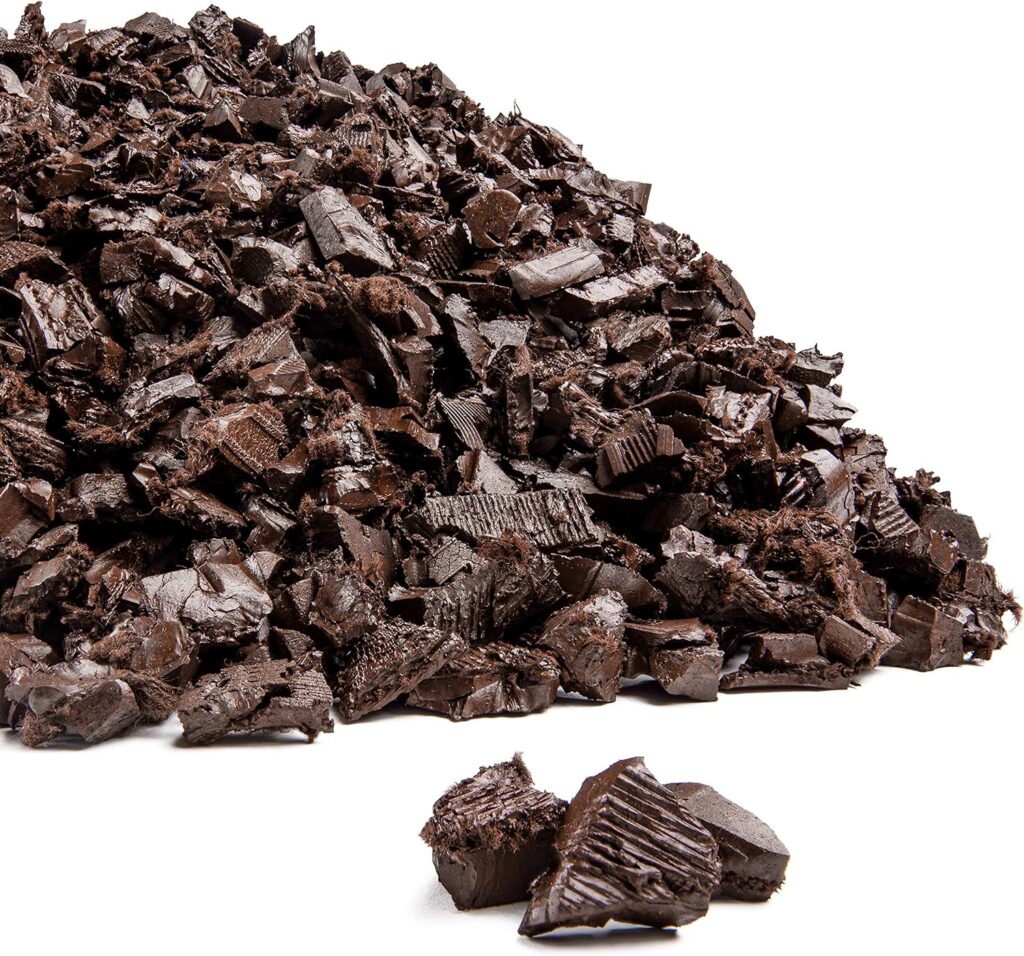
Playsafer
Material: Made from shredded rubber sourced from discarded automotive tires, these mulch nuggets give new life to old tires. These nuggets are 99.9% free of steel content, ensuring safety and preventing any rust-related issues.
Guidelines/Certifications: IPEMA Certified, ADA Compliant, CPSC, ASTM
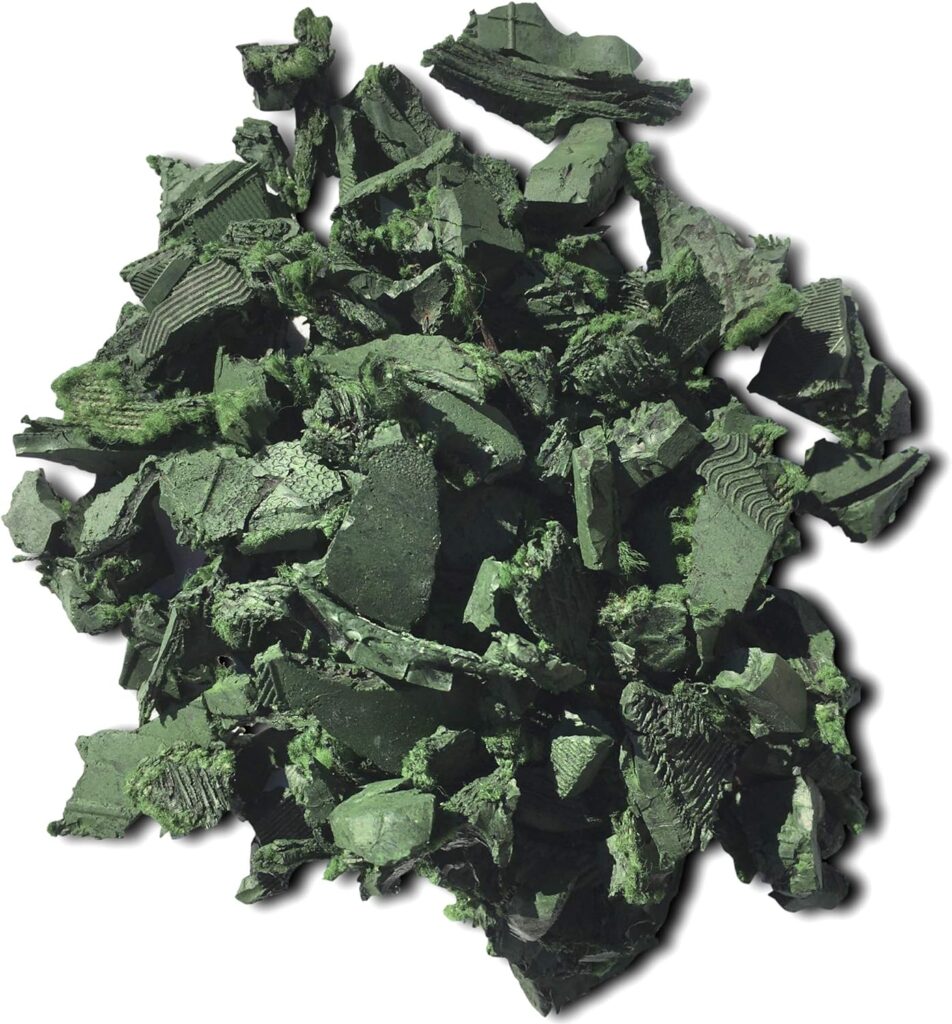
NuPlay
Material: NuPlay Rubber Mulch is derived from 100% recycled rubber obtained from discarded car tires. By reusing these tires, it contributes to environmental sustainability. These mulch pellets are almost entirely free from steel content, ensuring safety and averting any rust-related concerns.
Guidelines/Certifications: IPEMA Certified, ADA Compliant, CPSC, ASTM
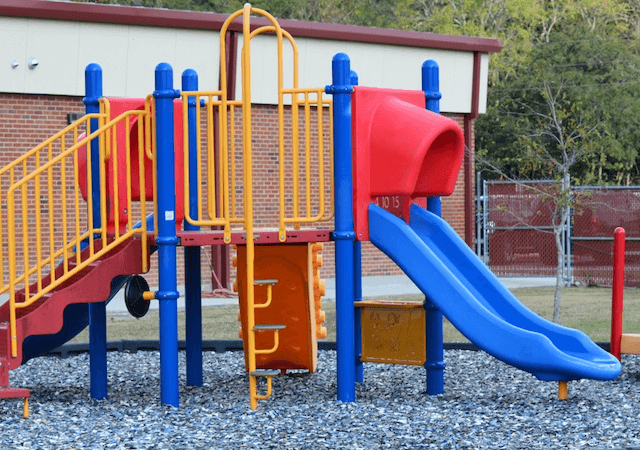
Image: Jelly Bean
Jelly Bean
Material: Jelly Bean Rubber Mulch is crafted from 100% recycled shredded rubber, sustainably sourced from safety tiles. The rubber used in Jelly Bean Mulch undergoes third-party testing for phthalates, red list chemicals, and other potentially toxic substances. It’s so safe that the product even passes indoor air certification.
Guidelines/Certifications: IPEMA Certified, ADA Compliant, CPSC, ASTM, CPAI-84 Fire Retardant, ISO 9001

Image: Best Rubber
Best Rubber
Material: Made from shredded rubber sourced from discarded automotive tires, these mulch nuggets give new life to old tires.
Guidelines/Certifications: IPEMA Certified, ASTM
The Environmental Benefits of Non-Toxic Rubber Mulch
Choosing non-toxic rubber mulch enhances playground safety and landscaping aesthetics and represents a notable stride towards environmental preservation. By recycling tire rubber, this product plays a pivotal role in diverting millions of tires from landfills annually, effectively diminishing the carbon footprint linked to waste disposal and tire manufacturing. Moreover, its enduring nature translates to fewer replacements, thereby curbing the consumption of organic materials typically utilized in landscaping endeavors.
Recycling and Sustainability
The transformation of tire rubber into mulch exemplifies the principles of a circular economy, wherein waste materials are repurposed into valuable commodities. This practice significantly diminishes the necessity for fresh raw materials, such as conventional wood mulch, and fosters the adoption of recycled products in residential and commercial landscaping ventures.
Reducing Carbon Footprint
The production and utilization of non-toxic rubber mulch actively mitigate the carbon footprint associated with landscaping materials. Using recycled materials, the energy and resources required for rubber mulch production are markedly lower than those necessitated for mining, processing, and transporting stone or manufacturing new plastic landscaping items.
Wildlife Protection
Unlike some traditional mulch materials that can attract pests like carpenter ants and termites, non-toxic rubber mulch does not appeal to these insects, offering an added layer of protection for your landscaping projects. Additionally, by preventing weed growth without chemical herbicides, rubber mulch helps safeguard local wildlife from exposure to toxic substances.
Safety and Health Concerns Addressed
One of the primary advantages of non-toxic rubber mulch is its safety profile, especially in play areas frequented by young children. The material’s shock-absorbent properties offer excellent fall protection, a critical consideration in playground safety. By adhering to the guidelines set by the Consumer Product Safety Commission, mulch provides a play surface that reduces the likelihood of injuries from falls, making it a responsible choice for schools, municipalities, and parents.
Chemical Safety
The concern regarding toxic chemicals and heavy metals in recycled rubber products has prompted manufacturers to adopt stringent processing methods. Today’s non-toxic rubber mulch products undergo thorough testing to ensure they are free from harmful substances, aligning with consumer expectations for safety and health.
Impact on Children and Pets
The safety of children and pets is a paramount concern for many when choosing landscaping and playground materials. The non-toxic rubber mulch’s composition minimizes the risk of exposure to harmful chemicals, offering peace of mind to parents and pet owners. Its soft surface also makes it a safer option for play, reducing the risk of scrapes and bruises associated with more rigid materials.
Guidelines When Buying
While not exclusively formal certifications, these aspects guarantee safety and conformity to relevant standards. Considering these guidelines when evaluating non-toxic rubber mulch ensures thoughtful decision-making and may be contingent upon your purchase’s purpose.
- Proposition 65 (Prop 65): Proposition 65 stands as a California state law mandating businesses to issue warnings concerning significant exposures to chemicals known to induce cancer, birth defects, or other reproductive harm. Adherence to Prop 65 standards denotes that a product does not contain harmful levels of specific chemicals listed under this legislation.
- FDA Standards: The Food and Drug Administration (FDA) serves as a federal agency entrusted with the regulation of food, drugs, medical devices, cosmetics, and various other products. While the FDA primarily focuses on consumables, its standards extend to materials that come into contact with humans, including rubber mulch.
- U.S. Consumer Product Safety Commission: The U.S. Consumer Product Safety Commission (CPSC) is a federal agency dedicated to ensuring the safety of consumer products. They establish guidelines for various products, including playground surfaces like rubber mulch. Manufacturers adhere to CPSC standards to ensure their rubber mulch products meet safety requirements, guaranteeing a play surface that reduces the likelihood of fall-related injuries.
- American Society for Testing and Materials (ASTM): Adhering to ASTM guidelines is crucial when purchasing non-toxic rubber mulch. These guidelines ensure quality, safety, and consistency. By choosing ASTM-compliant products, you can trust that the mulch meets rigorous testing standards, offers long-term durability, and minimizes risks associated with toxic substances. It’s an intelligent way to make informed decisions for both safety and environmental considerations.
- Americans with Disabilities Act (ADA): Ensures accessibility for individuals with disabilities by providing a surface that accommodates their needs. Rubber mulch endorsed by the Americans with Disabilities Act (ADA) guarantees safety and offers a supportive environment for wheelchair users, enabling them to navigate confidently and efficiently.
Pros and Cons of Rubber Mulch vs. Non-Toxic Mulch
Here is a comparison of the benefits of rubber mulch compared to non-toxic mulch.

Alternatives to Rubber Mulch
When exploring alternatives to using tire mulch, various organic options provide visual attractiveness and practicality. Here are some favored selections:
- Traditional Wood Mulch: Derived from shredded or chipped wood, traditional mulch is a popular choice for landscaping purposes. It excels in retaining moisture, suppressing weeds, and insulating the soil. While it may not provide the same level of cushioning as rubber mulch, it still offers some impact protection. Nonetheless, like organic materials, it undergoes decomposition over time and requires periodic renewal.
- Pea Gravel: This non-organic option comprises small, smooth stones that facilitate drainage and prevent soil erosion. Pea gravel boasts a natural aesthetic and demands relatively low maintenance. However, it lacks the shock-absorbing qualities of rubber mulch and may not be suitable for areas where fall protection is essential, such as playgrounds.
- Organic Materials: Options such as shredded bark, pine straw, or wood chips are included in organic mulches. These mulches decompose over time, enriching the soil with essential nutrients. They are easily accessible and often more budget-friendly compared to rubber mulch. However, they may necessitate more frequent replenishment and upkeep.
In the long run, opting for non-toxic rubber mulch proves advantageous because of its capacity to cushion falls and adhere to stringent safety standards. While natural alternatives may suffice for landscaping or less demanding purposes, playgrounds and areas with high foot traffic demand meticulous attention to safety measures. Seeking expert guidance and strictly adhering to safety protocols guarantee that the selected mulch adequately addresses fall protection concerns while retaining its visual allure and practical functionality.
Frequently Asked Questions
What are the benefits of using non-toxic rubber mulch in landscaping projects? Non-toxic rubber mulch offers numerous advantages for landscaping, including its durability, weed suppression properties, moisture retention capabilities, and attractive appearance. Additionally, it is environmentally friendly as it is made from recycled tires.
Are there color options available for non-toxic rubber mulch? Yes, non-toxic rubber mulch is available in various colors, allowing homeowners and landscapers to choose a shade that complements their outdoor aesthetic.
How does non-toxic rubber mulch perform in heavy rain? Non-toxic rubber mulch is designed to withstand heavy rain and other weather conditions. Its porous nature allows water to drain through, preventing pooling and reducing the risk of flooding in landscaped areas.
This post was about non toxic rubber mulch.

